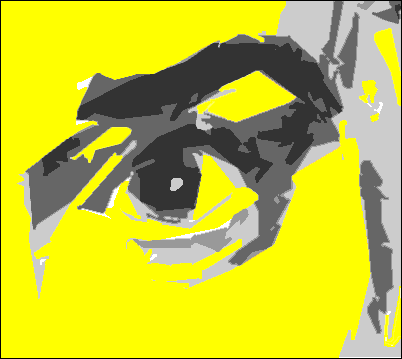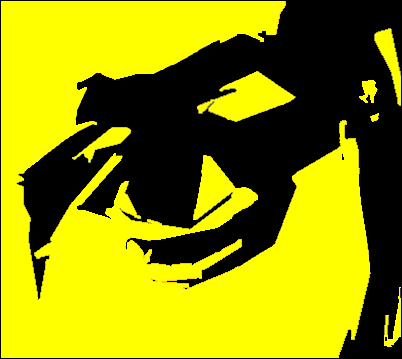

|
Take a step back Take a step back from your computer screen to see the shape turn into something recognizable. Now, have you done the drawings yet? Go do them! :-) But take a step back first - more like ten feet away from your computer and you'll see a marvelous transformation of even this flat, two-dimensional picture. That's by no genius of mine, but by your own brain's amazing faculties. Use your browser's back button to go And while you're here, check out the flipped version of the yellow and black upside-down illustration: |

| Up close this ought to look like some kind of abstract art.
This is exactly the point of getting into your right brain: you see things
as unique un-namable objects. Flipping the picture upside down (as was
done on the page you jumped here from), makes it unfamiliar to your
eyes. When it's unfamiliar, your brain can't name it, thus can't reference
it to some known object.
When you reference anything you're trying to draw to something you already "know" what it ought to look like, you tend to draw your pre-filed impression of the object - not the object that's in front of you. I'm only repeating this for those whom are jumping way ahead. See lessons ---- to get a better glimpse of this. A very important distinction This however, is different than learning about the immense detail that exists, for example, in and around the eye. This is what we're trying to accomplish here: bombard you with details you never saw before. Then you reference the learned, in-depth list of details you learned to look for. You then draw the unique version of that detail that exists right there, right now in front of your eyes, and in real time. Not the pre-conceived detail less eye you categorized away into your memory at age 4 . The distinction might seem slim - until you really start observing. Then this will all fall into place. And you'll thank me :-) |